Attraction marketing is a practical, powerful way to entice customers without pitching your product. With the right tactics, you’ll spark interest, build trust and position yourself as the brand people think of when they’re ready to buy.
In this post, you’ll learn how to create a successful attraction marketing formula, including seven strategies to engage and convert your target customers.
What is attraction marketing?
Attraction marketing earns your audience’s attention by offering real value upfront. Instead of pushing your product, you share helpful content that builds trust over time. When someone digesting all this content is ready to purchase, you’re already top of mind.
This approach can help small and medium-sized businesses (SMBs) without big ad budgets or teams stand out. Creating genuine connections and establishing a brand as the go-to authority naturally encourages sales.
For example, 360Learning’s CLO, David James, hosts “The Learning & Development Podcast”:
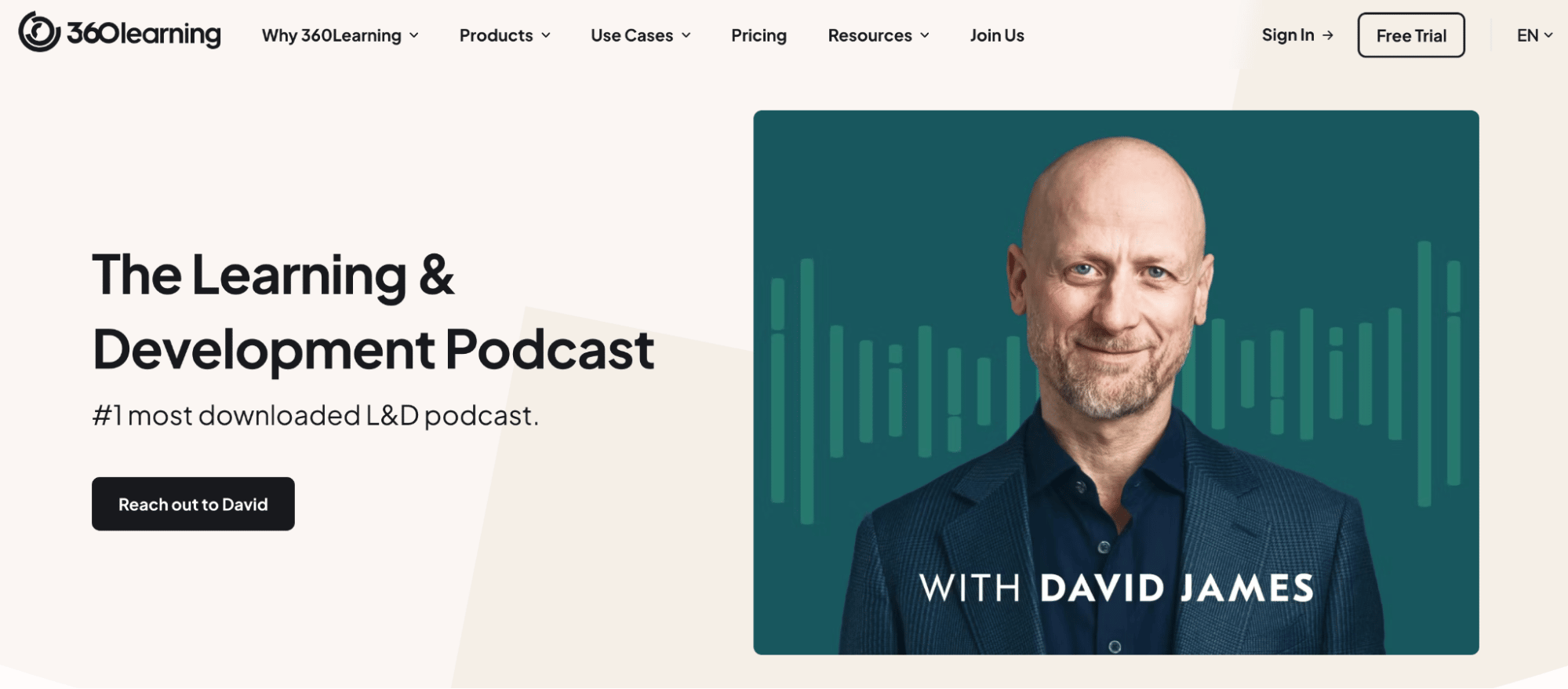
By consistently delivering valuable, relevant insights, the podcast positions 360Learning as a trusted voice in learning and development (L&D).
When listeners face a training challenge, they’re more likely to turn to the platform they already see as an expert.
Let’s say you run a small IT consultancy. Instead of cold-pitching to clients, you:
Post cloud migration tips on LinkedIn
Run free Q&A sessions
Share in-depth guides comparing the best platforms
Instead of selling or being promotional, your attraction marketing makes potential buyers feel like you’re simply helping. Building this trust and authority leads to customer loyalty and long-term growth.
Typical types of attraction marketing content
Your company’s best attraction marketing tactics depend on where your audience spends time and what kind of content they value.
Whether a solo consultant or a small agency, you don’t need to be everywhere. Consistently show up where it counts with content that educates, supports or inspires your ideal customers.
Here’s a breakdown of content examples for each typical attraction marketing channel:
Attraction marketing channel | Content examples |
| |
| |
| |
| |
| |
Podcasts |
|
While not a channel itself, search engine optimization (SEO) is a key strategy that helps potential customers discover your attraction marketing content through search.
Once your content is discoverable, the next step is making sure you deliver it in the right places. Start with the channels you’re already active on that feel natural for your business and audience.
Focus on being helpful (not salesy) and let the value you share do the heavy lifting.
How to create a successful attraction marketing formula
Attraction marketing works best when there’s a plan behind your efforts. A successful formula involves knowing your audience, creating content they care about and using tools you already have to deliver it consistently.
Here’s how to implement attraction marketing step by step.
Identify your target audience and understand their needs
Clearly define your ideal customers and learn what matters most to them. Attracting new buyers means targeting the right people with content that helps them solve problems or achieve goals.
When you understand your audience’s needs and pain points, you’ll create relevant, helpful resources that people are far more likely to engage with.
Let’s say you provide payroll software for small companies. You discover that your ideal customer is frustrated by confusing sales tax laws, so you create simple guides and videos that explain them.
By addressing this real pain point, you become a trusted source (not just a software provider). When it’s time to choose a solution, you’re already top of mind.
Start by building buyer personas based on customers’ voices to guide your messaging. Interview current and prospective customers and segment them into group templates. For example, you may include:
Fictional names (e.g., “Evan the Entrepreneur”)
Roles (e.g., “Founder”)
Top challenge (e.g., “Spending too much time on manual payroll each month”)
Primary goal (e.g., “Automate payroll and stay compliant with minimal effort”)
Channels they frequently use (e.g., “LinkedIn and email)
Here are some examples of questions that’ll help you build rich templates:
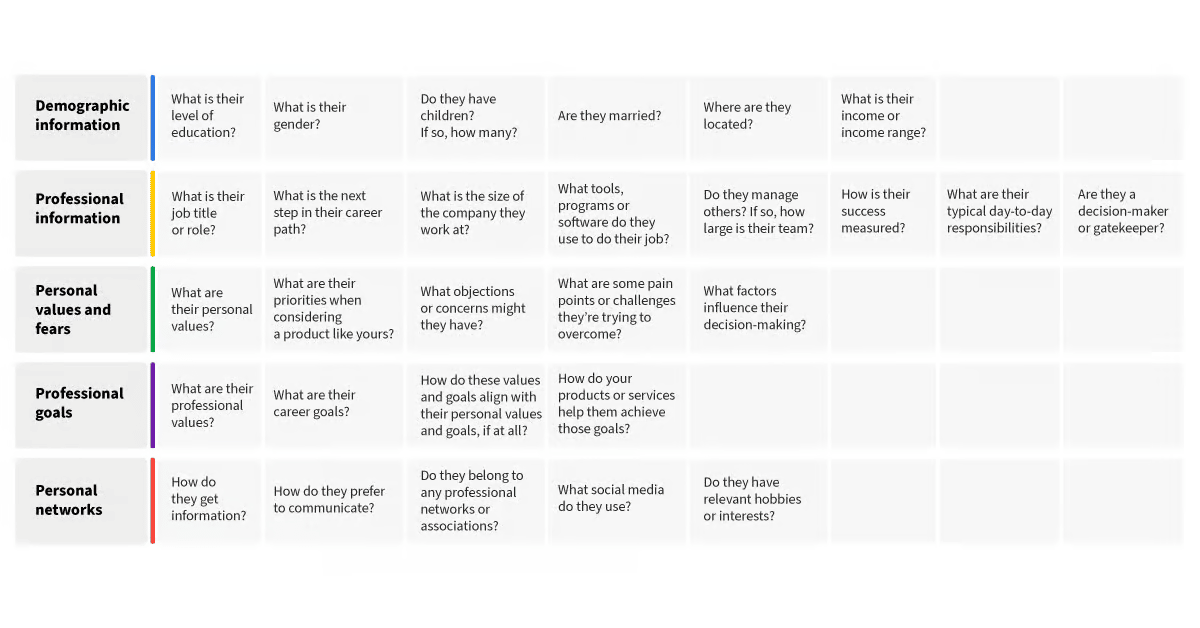
The more detail you have on your audience and buyers, the quicker you can craft content that speaks directly to the problems they’re trying to solve.
Here are four tips to get those insights:
Use customer surveys or feedback forms to gather common challenges and pain points at scale
Run short interviews or focus groups with current or past clients to dig deeper into their goals, hesitations and decision-making process
Analyze customer relationship management (CRM) data in tools like Pipedrive to spot patterns (e.g., which industries you attract most and features that get more engagement)
Review sales calls and emails to uncover recurring questions and turn them into helpful content
The better you know your current audience and customer base, the easier it is to build resources that attract the same type of people.
Better understand your customers with our Buyer Persona Templates
Map the customer journey to plan content and channels
Mapping the customer journey helps you understand where buyers are in the decision-making process and what information they need to move forward.
Attraction marketing is all about meeting people where they are. If someone’s just discovering they have a problem, they need education and reassurance (not a sales pitch, yet). On the other hand, someone comparing options wants proof you’re the right choice.
Break down your customer journey into three basic stages.
Awareness: A potential customer is identifying a challenge or opportunity
Consideration: They’re exploring solutions
Decision/purchase: They’re ready to choose a provider
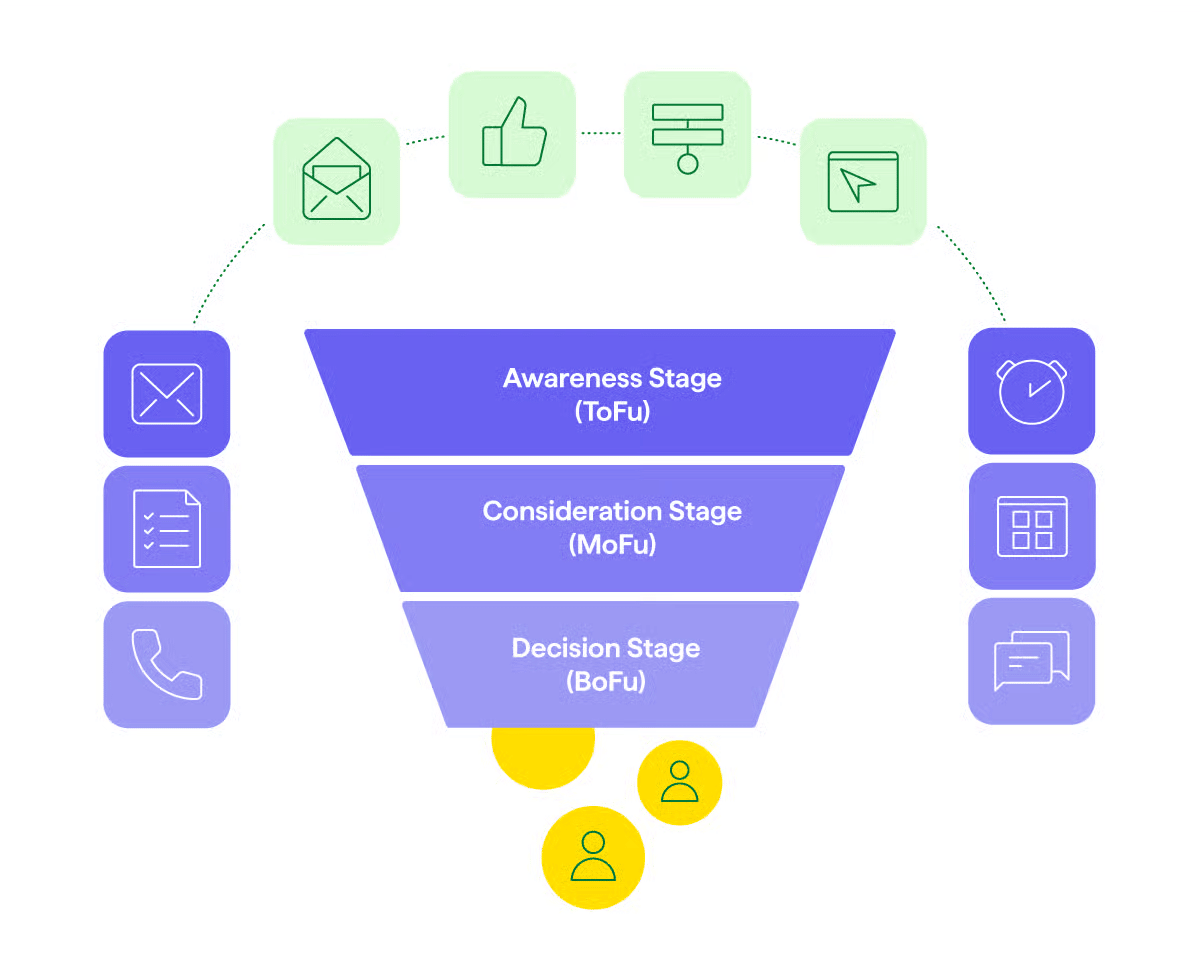
.
Note: Retention and advocacy come after conversion, so focus on these three initial stages to improve attraction marketing.
Your goal is to create quality content that meets buyers at each stage. Let’s say you run a marketing automation tool for small businesses.
An early-stage prospect might search for “how to grow an email list”. At the awareness stage, a blog post or lead magnet on that topic would attract them. Later, a case study or product demo video could help them choose you when comparing tools.
Identify key touchpoints between your audience and brand before someone buys for each of these stages. For instance:
A Google search that leads to your blog post explaining a common industry challenge (awareness)
A social post shared by someone in their network that highlights a helpful comparison guide (consideration)
A free checklist they downloaded from your website to prep for buying (decision)
Here are some more examples of common touchpoints:
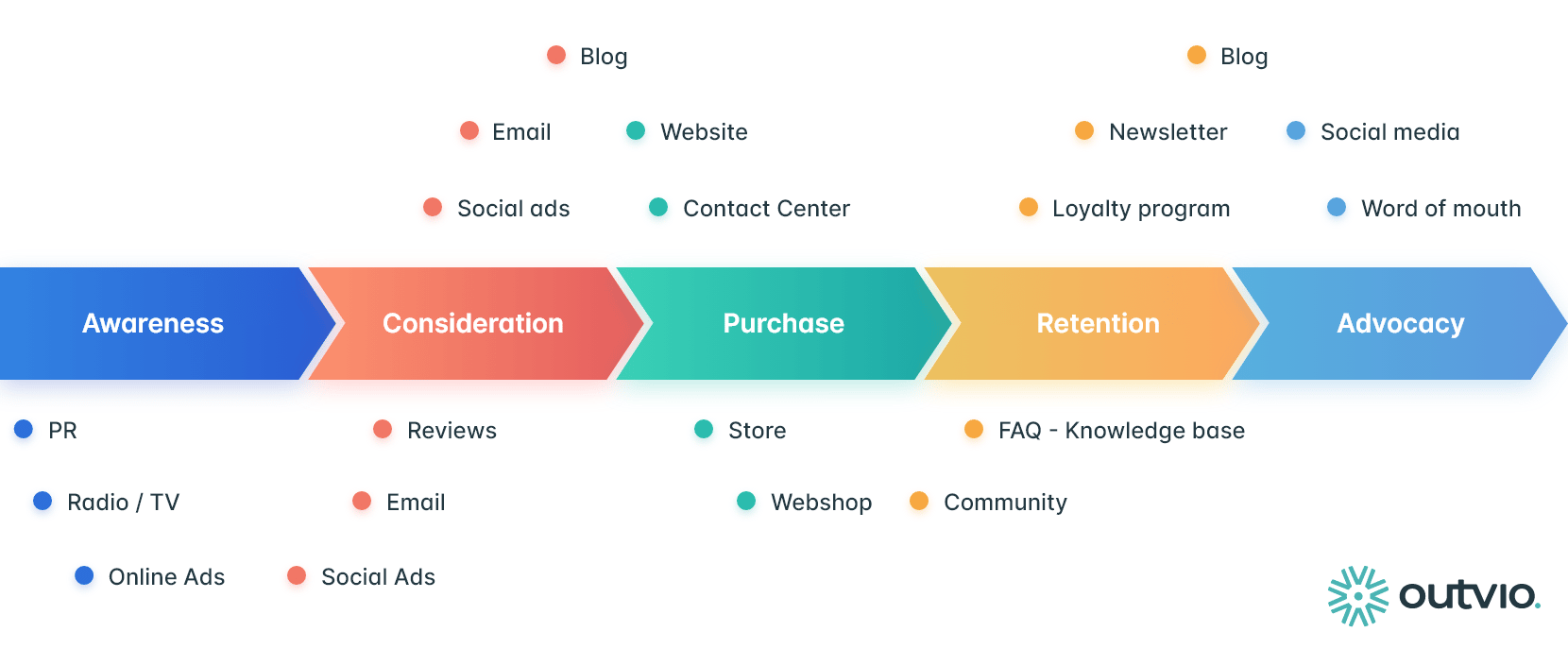
Once you have this list, ask yourself these questions to start planning your content:
What questions do customers have at each stage and touchpoint?
Which channels are they using (Google, YouTube, TikTok, LinkedIn, email)?
What kind of content would build trust and move them forward?
When you map the journey first, attraction marketing feels more intentional because every resource has a clear role to play.
Download our customer journey map template
Assess the competition to uncover opportunities
Competitor analysis helps you see how similar brands engage your ideal audience, so you can find ways to stand out.
In attraction marketing, the aim is to grab attention but then hold it by delivering valuable information. Seeing what others are doing (or missing) gives you a clearer picture of where you can offer something better or more unique.
For example, you might share comparison tables to differentiate yourself from big-name brands:
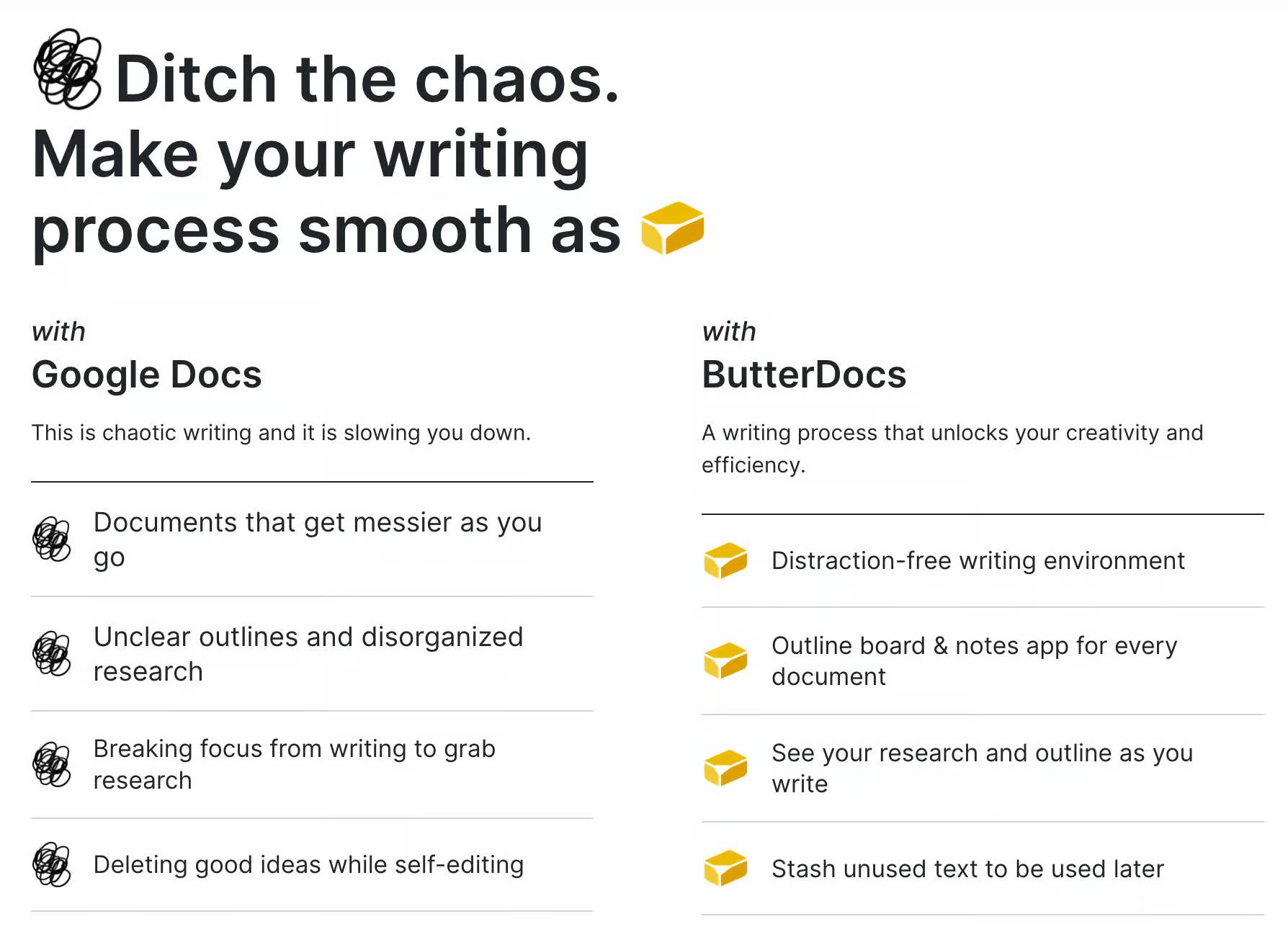
Let’s say you run a project management platform for agencies. If most competitors focus on flashy features but don’t mention collaboration or onboarding processes, you have an opportunity.
You could create a blog series or video walkthroughs showing how your tool simplifies client communication – a key pain point no one else is talking about.
Here are five ways to start assessing your competition:
Search your product or service category and note which brands rank on search engines and social media
Review their blog, email content, social channels and ads to see what topics they cover and how they speak to their audience
Identify gaps in their content to spot what’s missing and which questions go unanswered
Pay attention to engagement (comments, shares, company reviews, etc.) to learn what’s resonating
Highlight where you have a unique edge (e.g., better support, a more straightforward process or niche expertise)
Great attraction marketing differentiates your brand as more useful, relevant or trustworthy than your competitors.
Create a marketing calendar to execute your campaigns
Once you’ve planned your attraction marketing strategy, a clear calendar helps you stick to it consistently and purposefully.
This content works best when it feels natural and timely. In other words, it means showing up with the right message at the right moment (instead of posting anything just to stay active).
A scheduling or calendar app helps you plan and visualize your attraction marketing campaigns. For instance, Hootsuite or CoSchedule (below) both integrate with Pipedrive through Zapier.
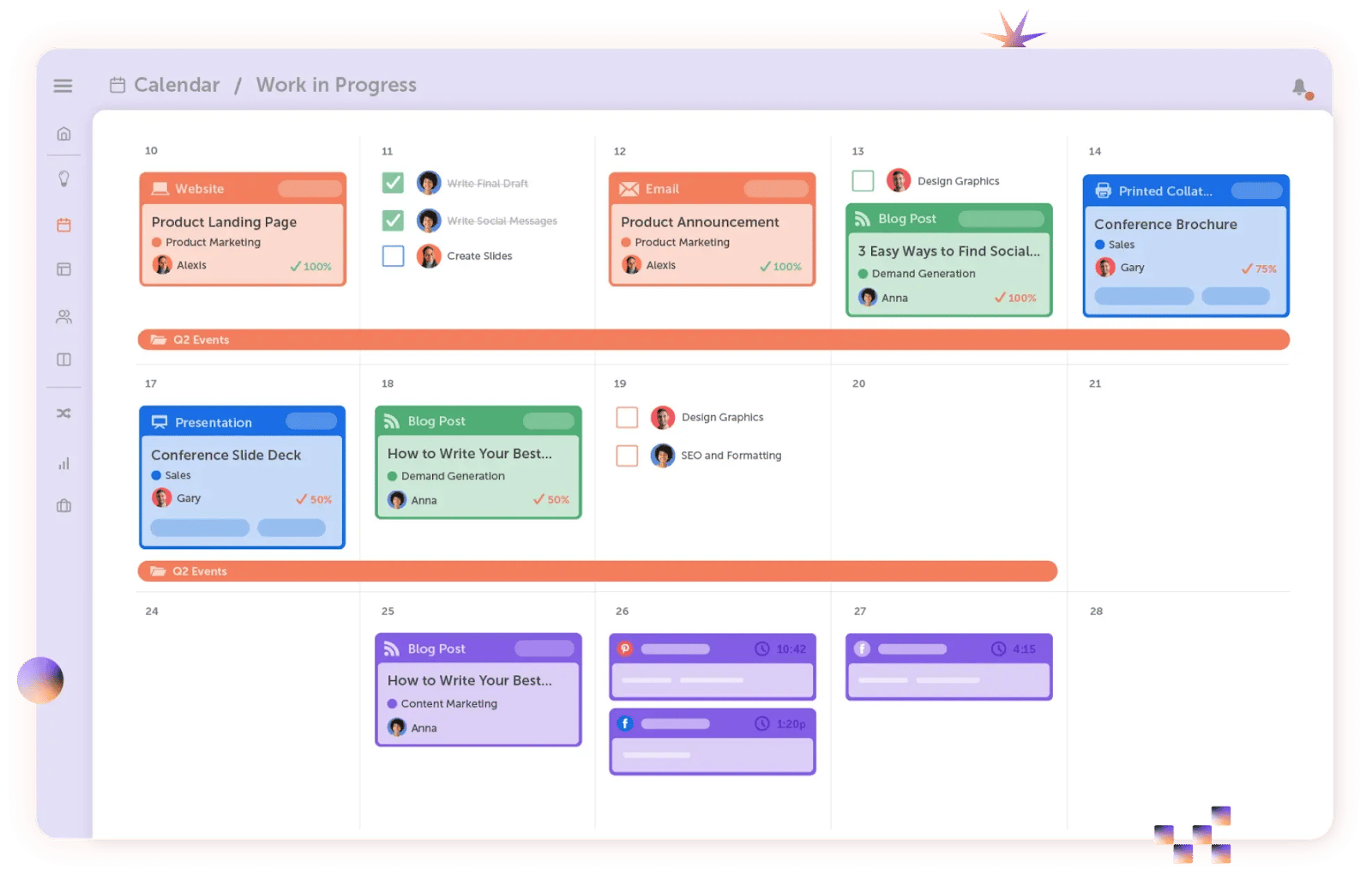
Let’s say you want to attract new leads ahead of tax season for your payroll software. You might schedule:
A blog post titled “5 payroll tax mistakes small business managers make before April 15”
A downloadable “Essential SMB tax prep checklist”
An email series sharing weekly tips for staying compliant
Social posts that break down IRS updates or common tax pitfalls
This value-first content builds trust before sales conversations start. It also positions your brand as the helpful expert that customers want to work with.
Here’s how to build and manage a simple marketing calendar:
Start with key dates like product launches, seasonal events, industry moments, etc.
Work backward from these dates to plan supporting content by awareness, consideration or decision journey stages
Assign content types to each campaign (e.g., blogs, emails, videos and social posts)
Use a project management tool like Pipedrive’s Projects to track tasks, assign owners and meet deadlines
Leave room for flexibility so you can create and add timely content based on marketing trends or audience questions
With a clear calendar, your attraction marketing becomes a consistent system that builds trust and brand loyalty over time.
7 attraction marketing tips to delight your target audience
To be successful, attraction marketing content must feel genuinely helpful and thoughtfully tailored to your audience. With so much noise online, you need to put in the groundwork and stay consistent to stand out.
Here are seven top tips to be more engaging and memorable, with real-world examples of attraction marketing for each.
1. Show off your personality
Your brand personality is the tone, voice and vibe you give off in your content. In other words, how you sound consistently when people “hear” you online.
When your attraction marketing messages sound human, your audience connects with you naturally. As you become familiar, people are more likely to follow, engage with and eventually buy from you.
For example, AI productivity software Notion uses conversational copy and playful visuals to create a unique personality:

Everything feels cohesive and down-to-earth, whether it’s a YouTube tutorial or a product update. Learning the tool feels effortless and enjoyable – perfect for attracting creative professionals and small teams who may not be as tech savvy.
Here’s how to choose and show off your own brand’s personality:
Define 3–4 traits that describe how your brand should sound (e.g., approachable, helpful, witty)
Write like a person talking to another person (forget buzzwords and jargon)
Add little personality touches like emojis, humor or individual stories where appropriate
Use your chosen voice consistently across blogs, emails, social captions and videos
Test and refine your tone based on what your audience responds to
When your brand sounds like a real person with something interesting to say, people are more likely to stick around and listen.
Note: While brand voice is your consistently friendly or bold communication style, your tone shifts depending on the situation (e.g., sounding upbeat in social posts or serious in customer support replies).
2. Build trust with honesty
Potential buyers will only engage with brands that seem transparent and trustworthy, especially in the early customer journey stages where they know nothing about you.
Telling the truth about what your product can and can’t do addresses common objections head-on. This honesty builds credibility and helps you attract customers who are a genuine fit for your service.
For example, project management tool Basecamp is known for its no-nonsense approach to marketing.
On its homepage and blog, it openly admits who the tool is for (“smaller, hungrier businesses) and not (“big, sluggish ones”):
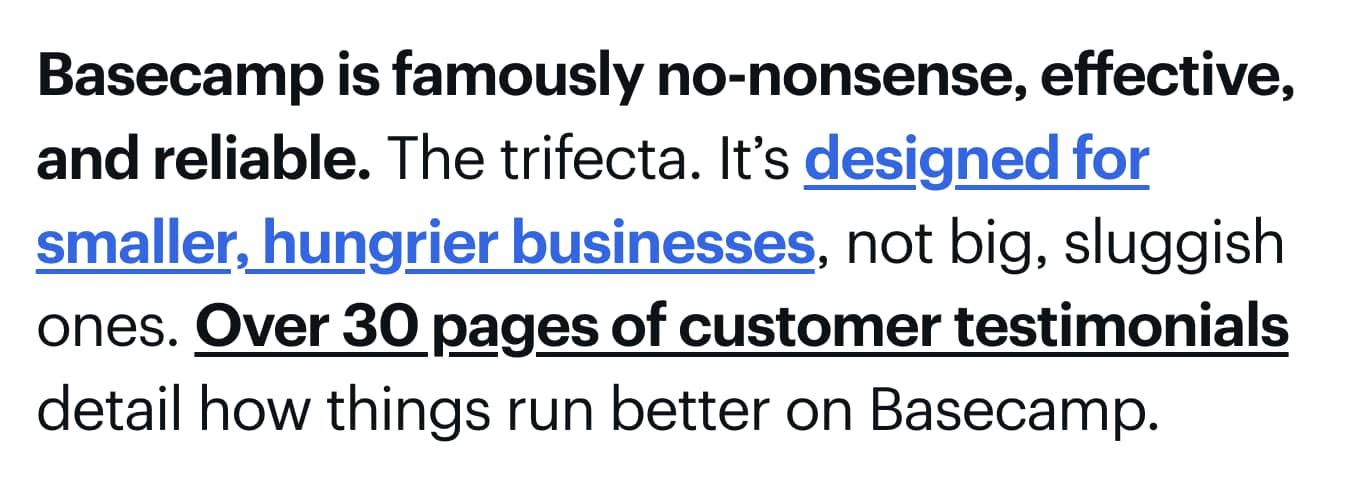
This honesty filters the right audience and stays top of mind for similar customers who aren’t ready to convert immediately.
Here’s how to build trust in your attraction marketing:
Be upfront about what your product does best (and where it may not be a good fit)
Use real numbers, behind-the-scenes content or customer quotes to tell your brand story
Create FAQs or myth-busting resources to address doubts early
Admit mistakes or share lessons learned when relevant (people appreciate vulnerability)
Focus on helpfulness first, not just conversions
When your brand leads with honesty, you’ll attract more of the right customers with less effort.
3. Use storytelling to create emotional connections
Storytelling helps your brand connect more deeply with customers by showing the human side behind the business.
Stories make your message more memorable and relatable. They help potential customers see themselves in the situations you describe, such as:
A shared struggle
An inspiring transformation
A moment of clarity
For example, social media management platform Buffer uses blog posts to tell stories about its remote work culture and team dynamics.
In one, it introduces its “Open Salary System”, which lays out how the company pays every role from admin to CEO:
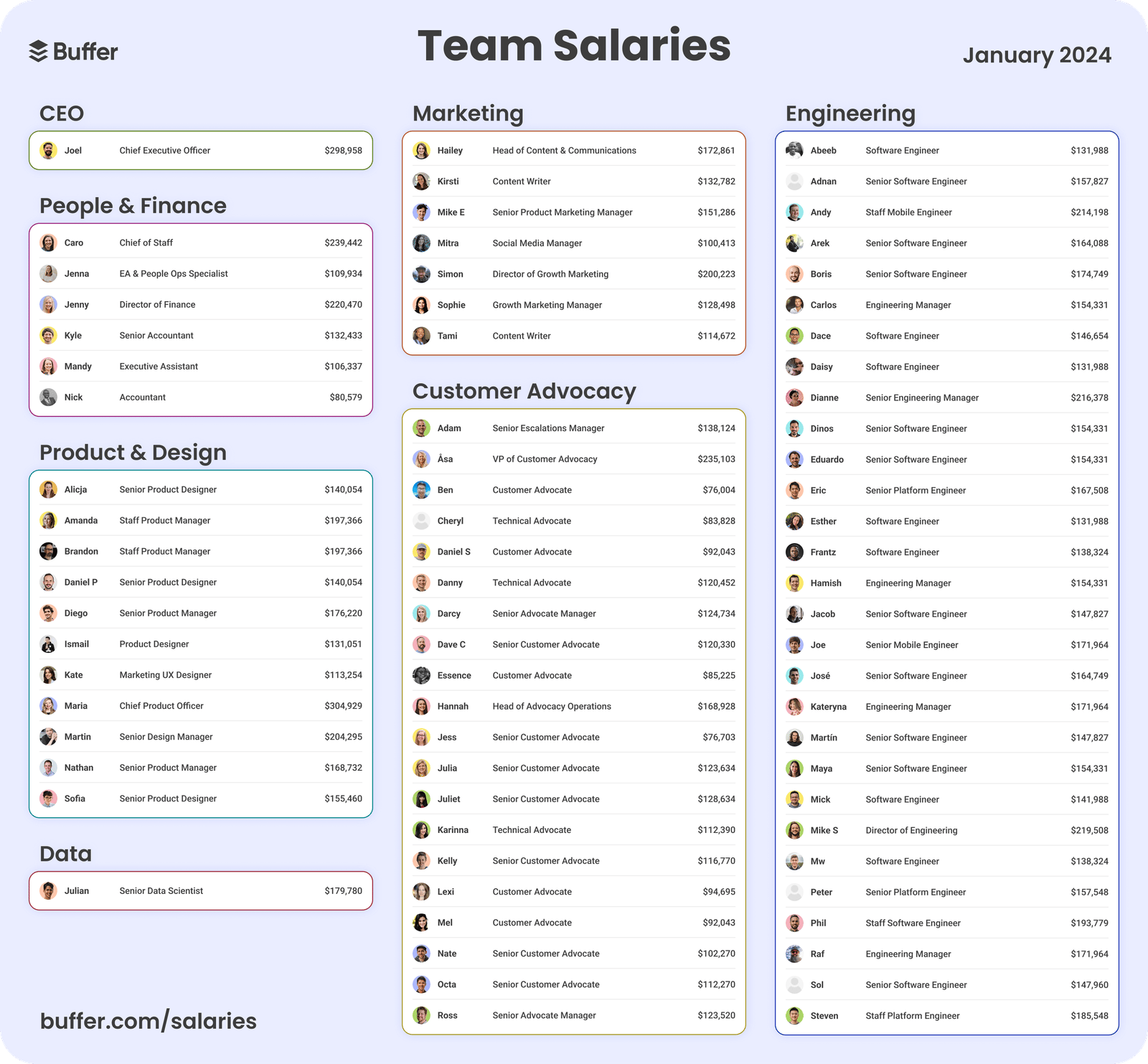
These stories (especially when combined with honesty and transparency) build emotional connections with like-minded professionals.
When they need a tool to help manage their social media platforms, they’ll already feel aligned with Buffer’s values and be far more likely to choose it over a faceless competitor.
Here’s how to use storytelling in your attraction marketing:
Share real stories from your customers, team or journey as a business
Use emotion (e.g., frustration, joy, relief or pride) to create connections
Structure stories with a clear before and after (including a challenge, turning point and outcome)
Choose narratives that reflect your audience’s own experiences or aspirations
When your brand makes people feel something, there’s a good chance they’ll remember and think of you when they come to buy.
4. Establish authority with thought-leadership content
Thought-leadership content helps you earn credibility by sharing valuable perspectives, original insights or strong opinions on topics your audience cares about.
Attraction marketing works best when people see you as a trusted expert. Sharing unique knowledge shows you have something to say and a reason people should listen.
For example, revenue AI platform Gong has built a strong presence by publishing fresh, research-backed takes on modern selling:
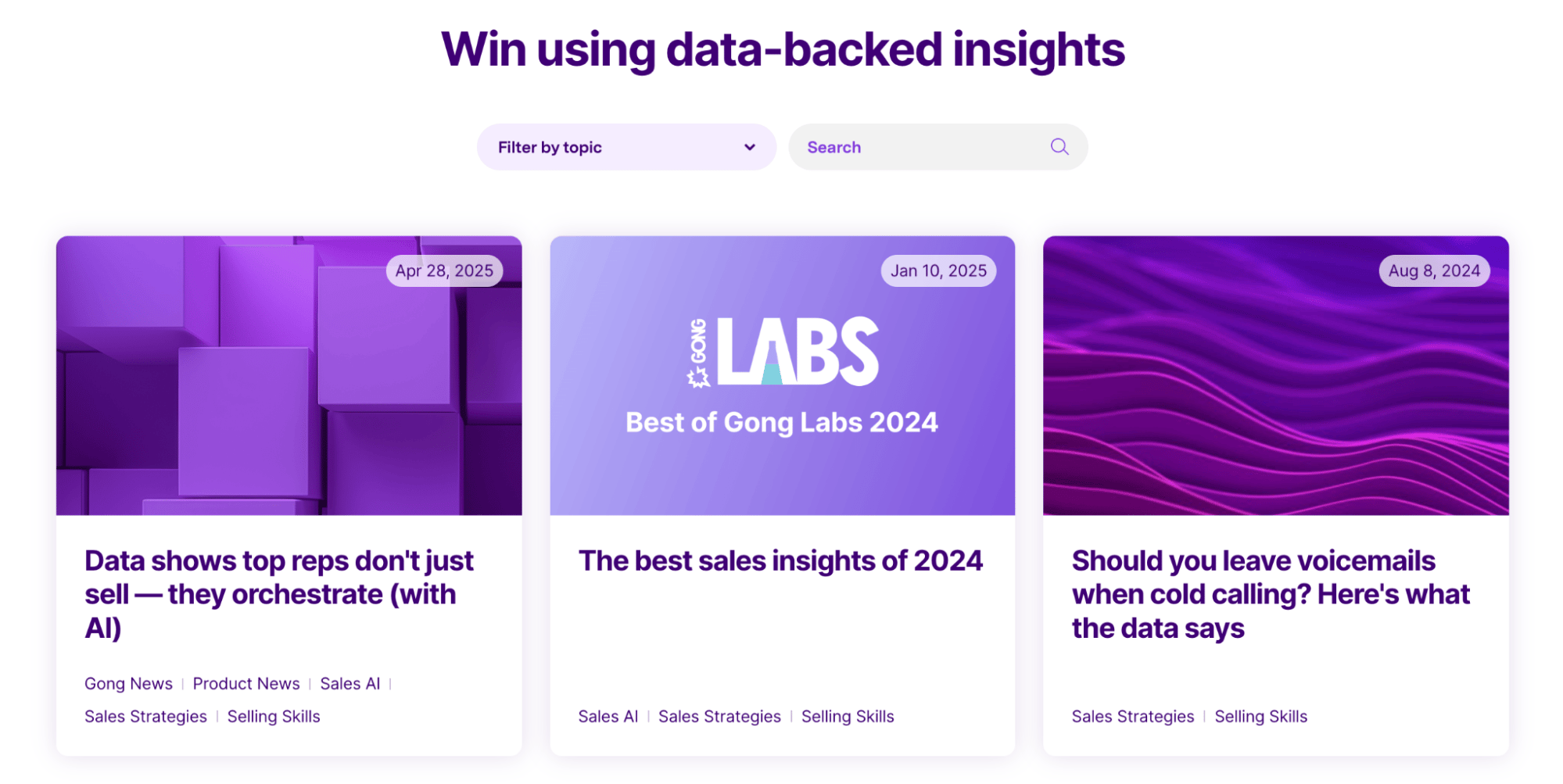
Gong Labs reports challenge outdated tactics, offer actionable advice and portray the company as an authority on revenue intelligence.
This content attracts business owners and sales leaders who want to drive revenue more effectively and would be a good fit for Gong’s paid product.
In addition to publishing original research or data-backed insights, here’s how to create your own content that strengthens authority:
Get your CEO or founder to share lessons learned from unique, real-world experiences (and build their personal brand at the same time)
Take a stance on key industry topics (even if it’s a bit polarizing)
Tie your perspective back to common problems your audience is facing
Test different formats like blog posts, LinkedIn articles, webinars or podcast episodes to see what resonates best
When you consistently share sharp, original insights, you lead conversations instead of joining them to draw in the right audience.
5. Leverage customer stories to make your product relatable
Customer stories show your audience how real people use your product to solve problems, making your solution feel more tangible and results achievable.
In attraction marketing, these narratives help buyers imagine themselves succeeding with your product. When someone sees a person like them getting value, they’re more likely to believe they can do the same and sign up.
For example, graphic design platform Canva often shares how small businesses and creators use its tools to achieve their goals.
On its blog and social media platforms, you’ll find stories like “How Canva helped one agency land $10,000 projects”:

These stories are compelling because they’re personal, emotional and grounded in everyday wins. They inspire others while showing what’s possible with the product.
Here’s how to do the same with your content:
Choose relatable customers whose stories align with your target audience
Focus on transformation (what was life like before and after using your product?)
Use quotes, visuals and tangible outcomes to make it feel authentic
Test visual formats (e.g., short videos vs. carousels) to see which is most engaging
Highlight different types of success indicators like revenue, time saved or confidence gained
The more your audience sees people like them succeeding with your product, the more likely they are to believe they can, too.
6. Use high-value lead magnets
Lead magnets are valuable resources people get from you in exchange for contact information, such as a course, template or e-book. To attract the right people, this content should solve a real problem (not just aim to collect emails).
In attraction marketing, the best lead magnets teach something useful, build trust and show off your expertise. They make people think, “If the free content is this good, imagine what the product’s like”.
For example, marketing intelligence tool Ahrefs offers free courses about SEO and blogging that teach readers how to drive traffic that converts:
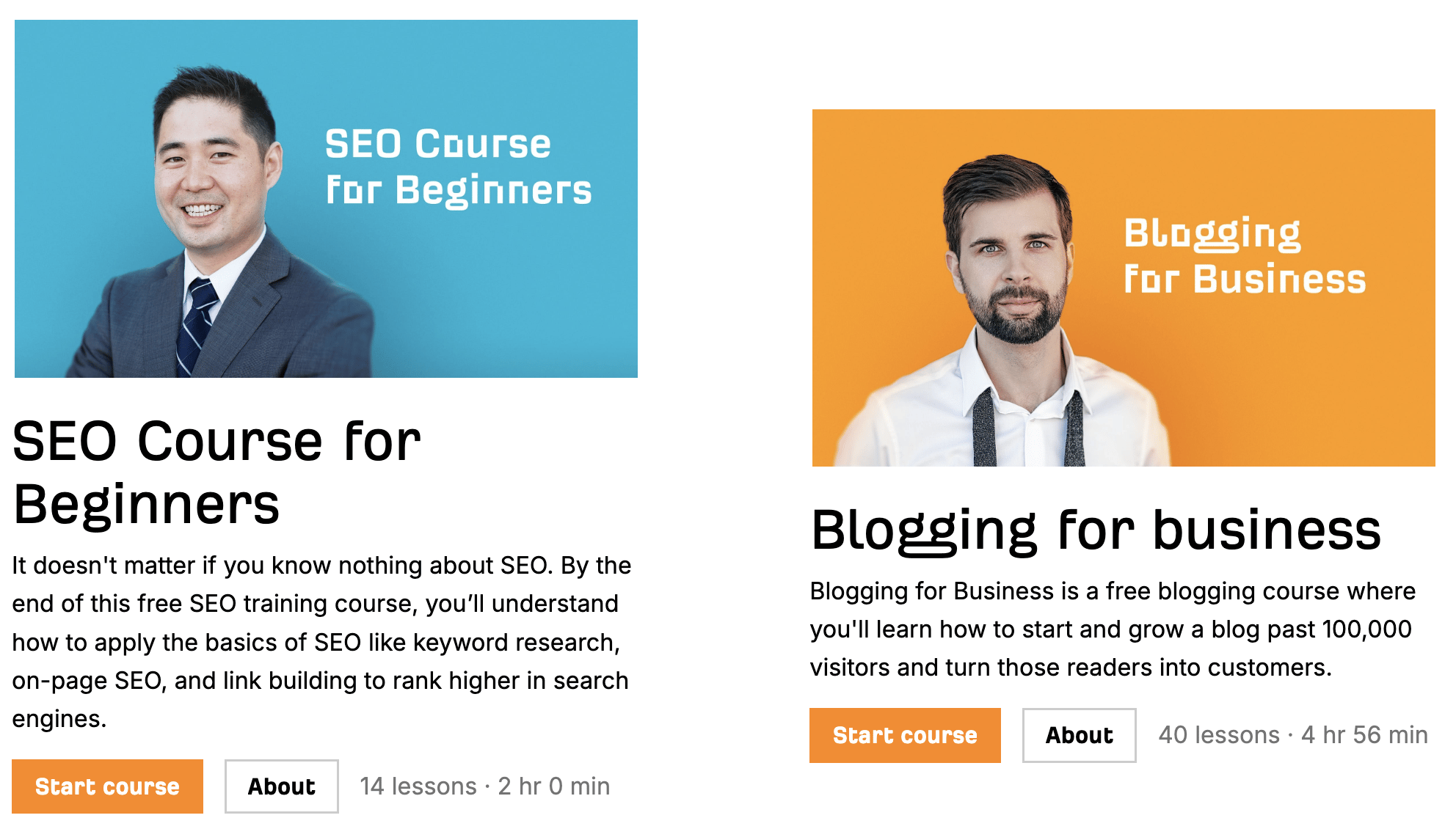
These high-quality courses build goodwill as they’re educational and available without signing up.
Ahrefs attracts marketers, founders and content creators who get value upfront and learn how the tool can help them achieve even more.
Here’s how to make the most of high-value lead magnets:
Pinpoint and solve a specific problem your target audience struggles with
Pick a format your audience will actually use (e.g., a free template, checklist or short course)
Keep the content practical, skimmable and actionable
Make the lead magnet easy to access and promote it regularly in relevant channels
A great lead magnet aligns with your product’s strengths, so the next logical step for your audience is to try it.
7. Let data guide and power your strategy
The best brands use data to determine what’s working, what’s not and where to focus their attraction marketing efforts next. They also use the findings themselves as content to build trust.
Tracking and learning from how people engage with your content helps you make data-driven decisions. You show up where your audience spends time with content that meets real customer needs.
By using tools and databases you already have (e.g., Google Analytics or CRM reports), you can spot trends like:
Which blog posts or videos attract the most traffic
Which lead magnets convert best
Where drop-offs happen in your marketing funnel
What questions customers ask before converting
Use these findings to craft more engaging content and proactively address objections. When the time comes to buy, the decision then feels easy.
You can also use the data you uncover to market your product. For example, accounting software Xero uses a powerful statistic in its social media bios, “Over 4.2 million subscribers globally”:
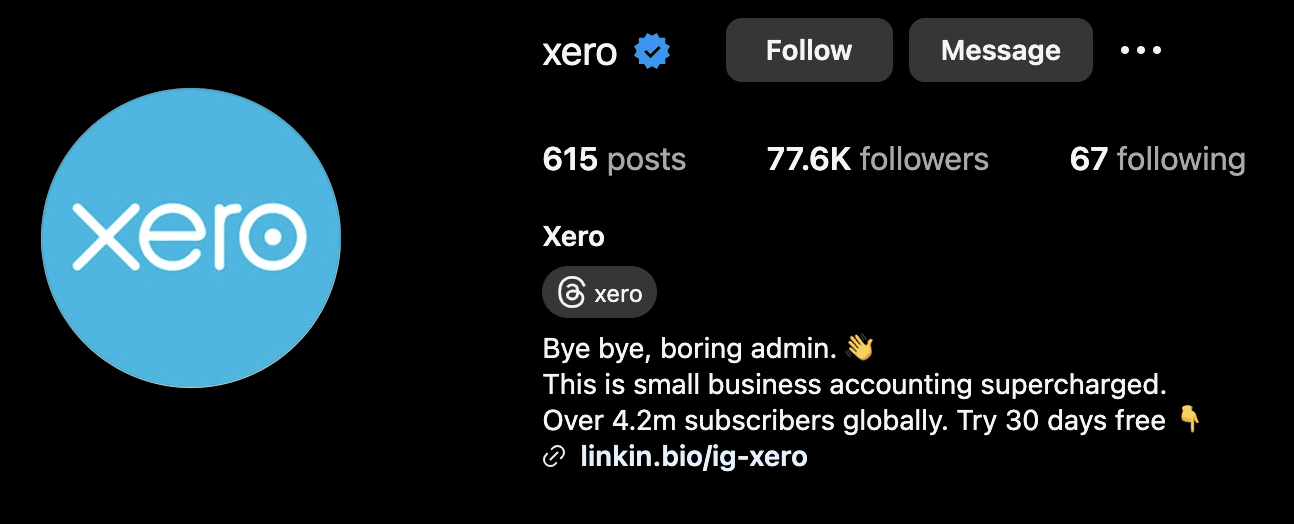
It’s short, clear and instantly communicates authority. The huge number tells potential customers they’re not alone and millions of other businesses trust this product.
While your user numbers may not be as high, smaller wins (like a “95% customer satisfaction rate”) can build credibility and show real value to potential buyers.
Here’s how to use data to improve your attraction marketing:
Set clear goals for each piece of content to measure its success (e.g., email sign-ups, time on page, demo requests)
Track performance with platforms like Google Analytics, your CRM’s reporting tools or analytics software like Hotjar or Optimizely (if you can afford them)
Regularly review which content performs best and what people are ignoring
Use audience feedback and FAQs to find new content ideas
Keep testing by changing formats, trying new channels and experimenting with messaging
Attraction marketing becomes far more effective when your strategy is shaped by real insights instead of assumptions.
How to use Pipedrive alongside your attraction marketing strategy
Pipedrive’s CRM system acts as a central hub to organize, track and optimize your attraction marketing efforts.
The software powers your strategy in two key areas:
Understanding your audience
Managing the customer journey
First, Pipedrive centralizes all customer data from forms, surveys and interactions, giving you a clear view of who your audience really is.
Use contact labels to tag people and businesses based on pain points, interests or behaviors to build sharper customer personas:
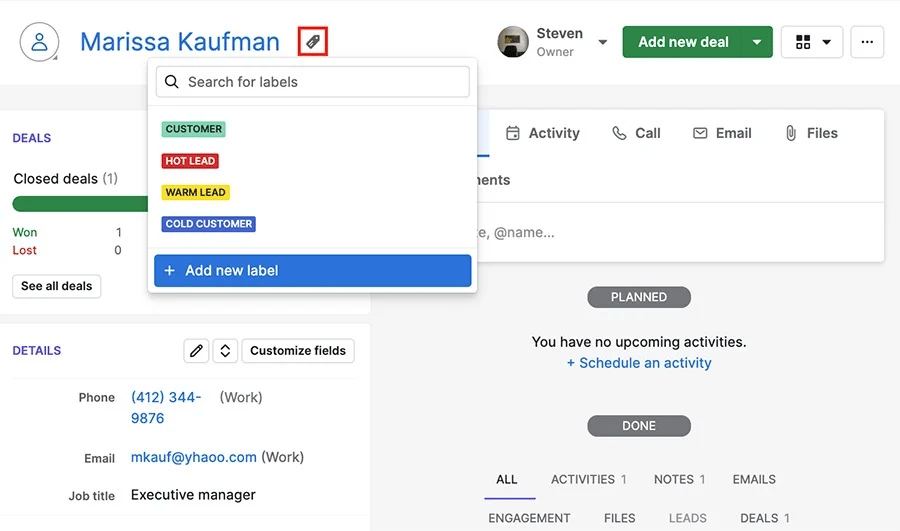
For example, you might add “Price-sensitive”, “Loves webinars” or “E-book downloaded”. These tags help you segment audiences and tailor attraction marketing content accordingly.
The more precise your insights, the more relevant and compelling your content will be. With everything stored in one place, it’s easier to spot patterns and personalize your messaging at scale.
Pipedrive’s customizable deal stages also let you track where each prospect is, from initial brand awareness to decision-making.
Use them to build separate pipelines for different campaigns or segments:
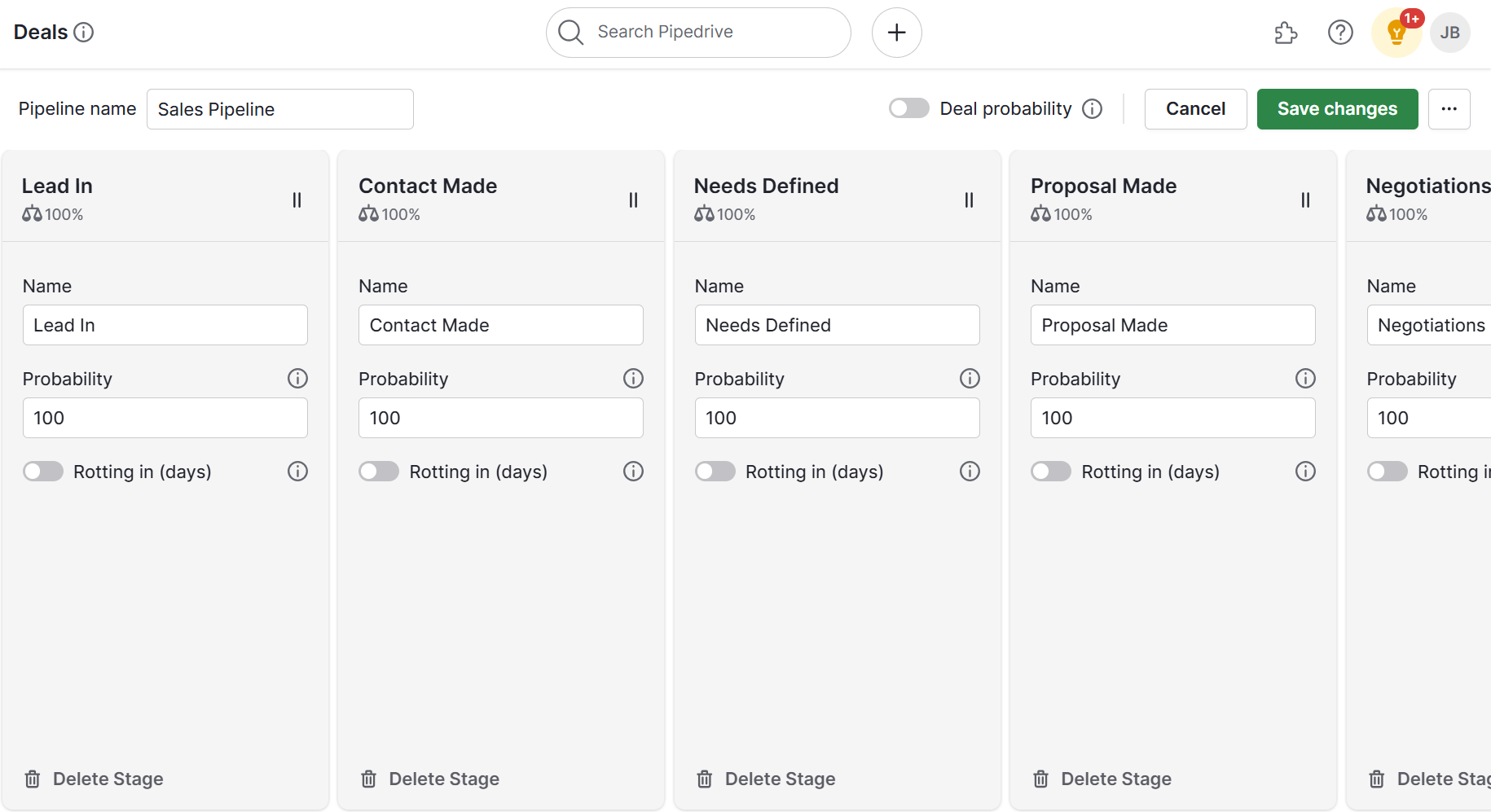
This visibility makes it easier to serve the right content at the right time – whether that’s a how-to guide for early-stage leads or a case study for those closer to buying.
Other helpful features include:
Using Projects to plan and schedule your content calendar so campaigns stay on track
Tracking engagement in Campaigns to see which emails or lead magnets spark interest and refine what you send next
Automating follow-ups to keep leads warm with timely, personalized content based on behavior
Scoring leads based on interactions (like email clicks or form fills), so you know who’s most engaged and where to focus your energy
By using Pipedrive alongside your attraction marketing, you’ll turn guesswork into a clear, data-driven process that grows your audience and boosts sales.
Final thoughts
Attraction marketing helps you build lasting relationships, attract higher-quality leads and position your brand as a helpful authority in your industry.
By understanding your customers and consistently delivering content that meets their needs, you’ll turn prospects into loyal customers more effectively.
With its easy-to-use CRM and project management features, Pipedrive helps you handle customer data and track every step of the buyer journey in one place. Try it free for 14 days to create marketing that delights your audience and grows your business.








